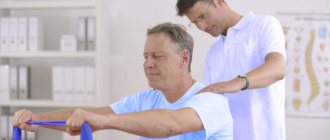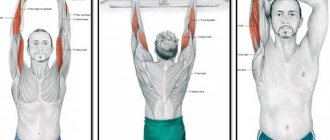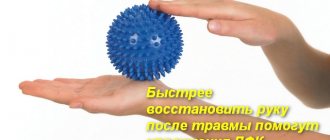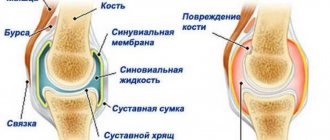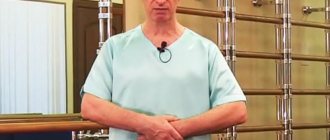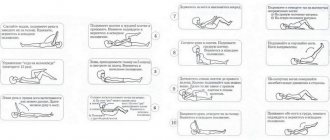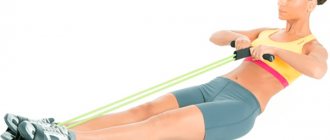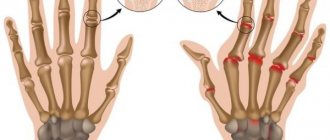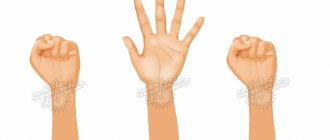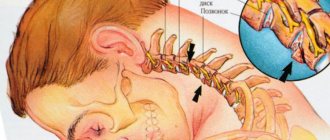The development of osteoarthritis of the shoulder joint is associated with the gradual destruction of cartilage due to excessive physical activity, unfavorable working conditions, or after an injury. Therapeutic gymnastics is an effective method of treating degenerative joint diseases.
In particular, special exercise therapy recommended for arthrosis of the shoulder joint helps partially restore the structure of the cartilage, reduce the symptoms of the disease and improve the patient’s quality of life.
General rules of exercise therapy for arthrosis of the shoulder joint
Exercise therapy for shoulder arthrosis improves metabolic processes and blood flow in the affected area, strengthens the muscles and ligaments of the shoulder girdle, increases the range of motion in the joint and reduces pain. However, these results can only be achieved by following the important rules of physical education:
- Train on a schedule, every day, at approximately the same time;
- In the first lessons, include the simplest exercises and only after the body has adapted to light loads, add more complex gymnastic elements;
- Do not chase the number of exercises, but focus on the quality of their implementation;
- Do only those tasks that do not cause intense pain;
- Select individual therapeutic exercise complexes together with a physical therapy doctor;
- It is better to take the first training in a medical institution, under the supervision of an instructor;
- Before starting a lesson, do a light warm-up so that the body gradually adapts to physical activity;
- All gymnastic elements must be performed smoothly, without sudden movements or jerks.
Reasons for development
Deterioration of cartilage nutrition is the main cause of arthrosis. It is due to the following factors:
- injuries – athletes, people dealing with heavy loads, and the elderly are at risk;
- physical activity - efforts in which the shoulder joint is directly involved, provoke sprains and muscle strain, the joint works in a mode of deficiency of necessary substances and gradually becomes thinner;
- infectious diseases;
- vascular diseases - cardiovascular, varicose veins cause a slowdown in blood flow;
- genetic predisposition – there is a high probability of pathology occurring in those whose parents and immediate relatives have arthrosis. This is due to the inheritance of weakness of articular tissue and structural features of the skeleton;
- age-related changes - with age, the likelihood of developing various diseases increases significantly, metabolism deteriorates, and hormonal levels change. All this is aggravated by inactivity, and as a result leads to irreversible changes in the joint-forming surfaces;
- congenital defects - dysplasia, insufficiency of the ligamentous apparatus limit the functionality of the shoulder, due to which muscle dystrophy begins to progress, disrupting the normal conductivity of surrounding tissues and reducing the nutrition of the joint itself;
- excess weight - may be a consequence of metabolic disorders or poor nutrition, but, nevertheless, leads to endocrine problems and depletion of cartilage;
- concomitant diseases - rheumatoid arthritis, diabetes mellitus, psoriasis, gout;
- changes in hormonal levels - observed in women during menopause and entail metabolic disorders, and even during this period, due to a sharp decrease in estrogen levels, calcium is washed out of the bones, causing them to become fragile.
Indications and contraindications for therapeutic exercises
Physical therapy exercises are indicated for:
- osteoarthritis of the shoulder joint stages 1-3;
- arthritis in remission;
- limited mobility and pain when moving the joint;
- concomitant inflammation of the soft tissues surrounding the shoulder joint;
- the presence of complications in the form of compression of blood vessels and nerve trunks.
You should refrain from training or postpone it if:
- exacerbation of arthritis;
- presence of a foreign body in the joint;
- acute infectious process;
- severe disturbances in the functioning of the heart and lungs;
- decompensation of any chronic disease;
- malignant neoplasms;
- mentally unstable condition;
- X-ray changes corresponding to the last stage of osteoarthritis;
- severe osteoporosis, with a high risk of pathological fractures.
Important!
To identify possible contraindications, consult your doctor before starting training. Only a doctor, based on examination data, will be able to accurately determine the stage of the disease, identify concomitant pathologies and select a suitable complex of exercise therapy.
The essence of the problem
The shoulder is a complex element that provides movement in almost all planes. It is because of their mobility that the shoulder joints are highly susceptible to damage and rapid wear.
Dystrophic and degenerative processes in cartilage tissues and bone surfaces without pronounced inflammatory signs are called arthrosis. The disease is chronic and progressive and is accompanied by increasing pain. Without timely measures taken, a person risks becoming disabled.
A set of exercises for shoulder arthrosis
The above exercises can be done daily, 2-3 times a day, provided there is no acute pain syndrome. They take about half an hour to complete. The number of approaches is from 5 to 15.
Note!
The maximum duration of training should not exceed 45 minutes, and the interval between them should be at least 3.5 hours.
- Lying on the floor, place your arms straight above your head and stretch.
- Sit down and clasp your fingers behind your back so that the elbow of one hand is pointing up and the other down. Then switch hands.
- Stand facing a wall at a distance of 50 cm from it. Place your palms on a vertical surface at the level of your collarbones, elbows pointing down. Slowly lean forward, then push off the wall with your hands and return to your original position.
- Take a wide ribbon, hold it vertically - one hand above the other at a distance of about 40 cm. The lower hand pulls the ribbon down, the upper - up. Then swap limbs.
- Repeat the previous task, only with your hands behind your back: the upper one at the level of the back of the head, the lower one under the shoulder blades.
- Stand straight, feet at shoulder level. Lean forward, touching your opposite foot with one hand. The second hand is pulled back at this time. Repeat with opposite limbs.
- Stand near the table, grab the edge of the tabletop. Inhale and bend back, exhale and approach the table as if you are about to do push-ups.
The most effective physical exercises
We include in this category gymnastic elements that help not only increase the mobility of the limb and get rid of the unpleasant symptoms of the disease, but also slow down its progression.
- Go to the wall, lean your healthy arm against it, bend your torso slightly so that the affected limb hangs down freely. Swing your relaxed arm forward - backward, right - left, in a circle, an average of 7 times in each direction.
- Sit at the table, place your elbows on the tabletop at a distance of 20 cm from each other, connect your fingers with a lock. With your sore hand, press down on your healthy hand, trying to place it on the table. The healthy limb, in turn, resists it.
- Take a wide ribbon, clasping it with your palms at a distance of 25 cm from one another. Raise the band above your head and then bend your arms to bring it behind your head. Then pull it up again.
- Stand close to the wall, resting your palms against it at chest level. Alternately “draw” large circles on the wall with the palm of your right or left hand.
- Wrap your arms around your shoulders: your right hand on your left shoulder girdle, your left hand on your right. Slowly slide your fingers along the shoulder blades towards the spinal column. The closer your fingertips are to each other, the better.
Exercise therapy to eliminate pain due to arthrosis
The arsenal of physical therapy includes not only strengthening exercises, but also special exercises that help relieve shoulder pain during exacerbation of arthrosis of the shoulder joint. The number of repetitions is strictly individual and depends on the severity of the pain syndrome.
- Approach the wall at arm's length. Slowly move closer and closer, sliding your fingers upward along the vertical surface until you stand close to it. The back and arms remain straight.
- Grasp the back of a chair or tabletop with your hands. Start moving further away from her without unclenching your fingers. The back gradually bends to an angle of 90 degrees. Stay in this position for 5 seconds.
- Bend your arms at right angles to your body, stand in the doorway and place your forearms along its edges. Step forward so that your shoulders and shoulder blades move back a little.
- Clasp your straight arms behind your buttocks and slowly lift them up without bending until pain appears. Hold in the highest position for 15-20 seconds.
- Place your hands behind the back of your head. Move your right palm down the neck to the interscapular area. With your left hand, lightly pull your right elbow, increasing the tension. Then switch hands.
Treatment methods
Treatment of arthrosis of the shoulder joint is carried out using conservative methods. In some cases, recipes from traditional medicine are appropriate, but they are effective only in the early stages of the disease. Conservative methods:
- medications;
- physiotherapy;
- massage;
- acupuncture;
- physiotherapy;
- diet.
The medications are intended to relieve pain and inflammatory syndromes and restore cartilage. This:
- analgesics;
- non-steroidal anti-inflammatory drugs;
- corticosteroids;
- chondroprotectors;
- ointments for external use.
In situations where the pain becomes intense, blockades are prescribed - hormonal injections of diprospan, flosterone, hydrocortisone.
Physiotherapeutic procedures are carried out by the following means:
- electrophoresis;
- ultrasound;
- magnetotherapy.
They are designed to enhance the effect of medications and speed up the healing process. A positive effect on tissue regeneration, the condition of blood vessels, blood flow and lymph flow was noted. As a result, metabolism is normalized, the joint begins to receive adequate nutrition and strengthens.
Massage can be performed only after the acute phase has subsided. It is indicated for all types of arthrosis. Massage restores motor function, removes muscle tightness, and stabilizes the nutrition of the cartilage.
Treatment and elimination of symptoms of arthrosis of the shoulder joint with gymnastics is an effective method that has preventive and rehabilitation significance. It is prescribed to patients who have completed a course of medication and have passed the severe stage. The doctor recommends a set of exercises; you can do it at home or in a group. Contraindications to training:
- heat;
- cardiovascular diseases;
- increased intracranial and blood pressure.
Author's methods
Doctors of different specialties are developing unique techniques that make it possible to most effectively improve the condition of the shoulder joints. All proposed treatment methods have their own characteristics and specific implementation techniques.
Exercises by Evdokimenko
Rheumatologist P.V. Evdokimenko advises daily performing simple exercises that are effective not only for osteoarthritis of the shoulder, but also for inflammation of the surrounding tissues - glenohumeral periarthritis.
- Sit on a stool, place your palms on your waist. Without moving your palms, move your shoulders up and down.
- In the same position, move your shoulder joints forward and backward.
- Now rotate them first forward, then backward. Make sure your hands remain on your belt at all times.
- With the palm of your left hand, clasp your right shoulder joint so that your elbow points down. With your right hand, pull your left elbow. At the same time, the left hand offers resistance, firmly holding the right shoulder. Swap your hands.
- Get close to the wall. Mark on it the highest point that you can reach with the fingers of your affected hand. Now make the second mark a couple of centimeters higher and reach for it with all your strength with your hand. The exercise can only be performed during remission.
All tasks are repeated at least 5 times.
Bubnovsky's exercises
The method of Professor S. M. Bubnovsky involves multiple repetitions of each task - up to 30 times. However, their number needs to be increased gradually.
- Take a standing position with your feet shoulder-width apart. Raise your arms straight up through your sides and lower them along your body.
- Stretch your arms in front of your chest, bring them together and spread them apart.
- From the previous position, cross your upper limbs in a horizontal and then a vertical plane.
- Squeeze and relax your outstretched hands with force.
- Perform circular movements with your arms in the shoulder joints, first forward, then back.
- Sit on a stool, place your palms on your waist. Perform figure eight movements with the shoulder girdle, leaving the lower part of the body motionless.
- Lie on your back, place your hands behind your head and join your elbows in front of your face.
Gitta Exercises
The technique of chiropractor V.D. Gitt includes low-amplitude movements in the shoulder joints and is suitable for patients with severe cartilage degeneration. The number of repetitions depends on the patient's condition. Perform tasks while sitting or lying down.
- Sit down at the table, place your hands on it. Start swinging your elbows with an amplitude of no more than 2 cm. At the same time, you need to relax your limbs as much as possible.
- Shrug your shoulders slightly, moving them about 1.5 cm up and down.
- With the same small swing, move your shoulders forward and backward.
- Proceed to low-amplitude rotation of the shoulder joints, first forward, then backward.
Diagnosis
To determine the exact diagnosis and extent of damage to the shoulder joint, it is necessary to undergo a complete examination by a doctor. At the onset of the disease, you can consult a therapist. He will prescribe medications, massages, and physical procedures. More complex cases are considered by a rheumatologist and an orthopedic traumatologist.
In addition to examination and palpation, the patient will receive a referral for an x-ray, with which the first signs can be detected. The most effective method is magnetic resonance imaging (MRI), which provides a three-dimensional image of the joint itself and surrounding soft tissues. To determine the presence or absence of inflammation, you need to undergo laboratory and biochemical tests.
Yoga
Some elements of Eastern practices also help combat changes in shoulder structures. The following yoga asanas provide the greatest effect for osteoarthritis:
- Shalabhasana, locust pose, strengthens not only the shoulder girdle, but also the back muscles. Lie on your stomach, rest your forehead on the floor, bring your legs and feet together, extend your arms straight along your body, palms up. As you inhale, lift your chest, head and limbs off the floor. The legs should be as tense and stretched as possible, the shoulder blades should be brought together, the fingers should be stretched towards the feet. Hold the pose for 30 to 60 seconds.
- Dandasana, staff pose, is easy to do and is a great stretch for the chest and shoulder girdle. Sit on the floor, straight legs, pull your toes towards you. Place your hands on the floor, placing them parallel to your body. The fingers of the hands are directed towards the feet. Stretch your entire chest upward. Do not throw your head back, it looks straight. Stay in this position for about a minute.
From the listed exercise therapy techniques, each patient can choose the one that suits him or combine individual elements. The most important thing is to follow the basic rules for conducting classes and agree on the chosen method with your doctor. Then, subject to regular training, after 2 weeks you will feel a decrease in pain and discomfort in the shoulder joints.
